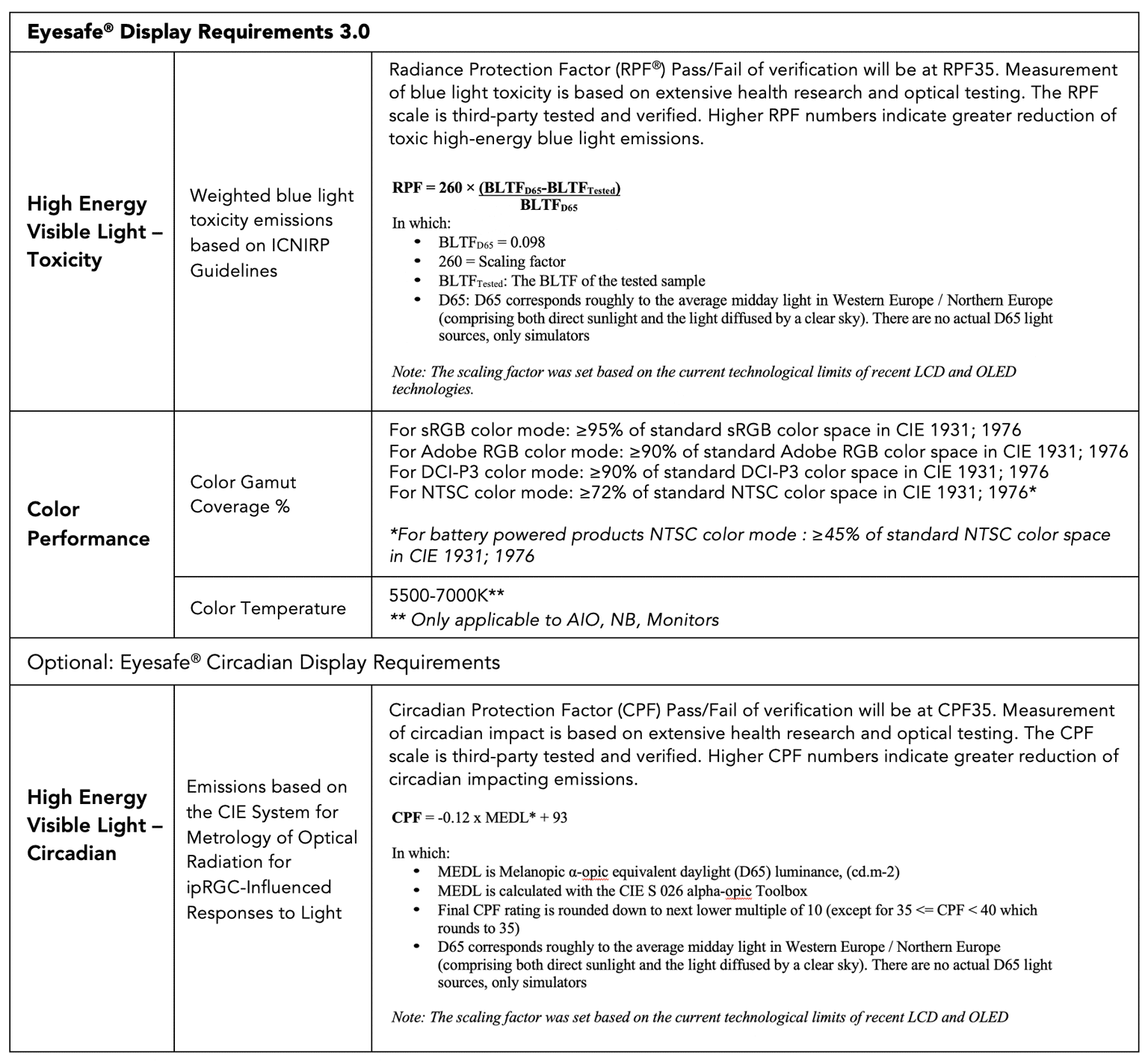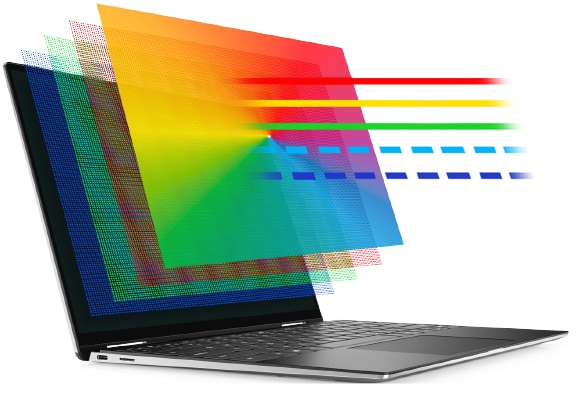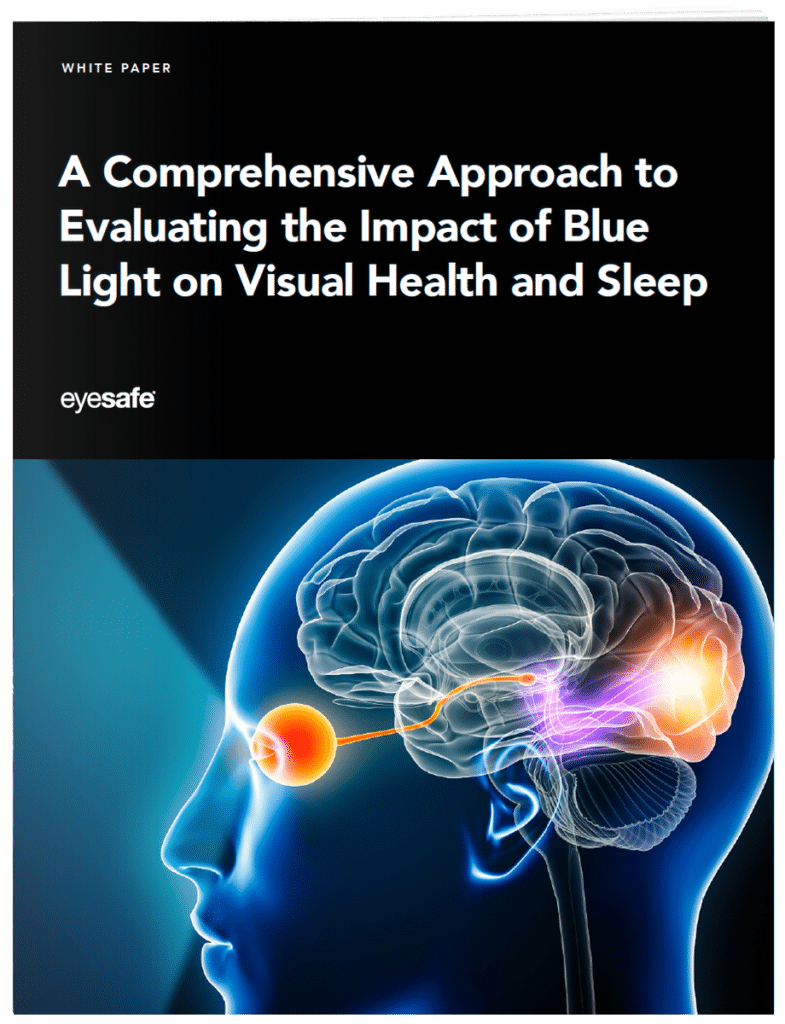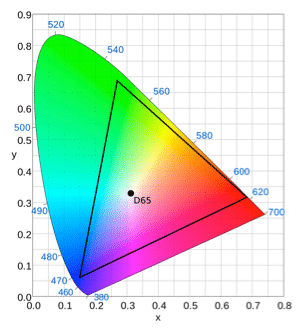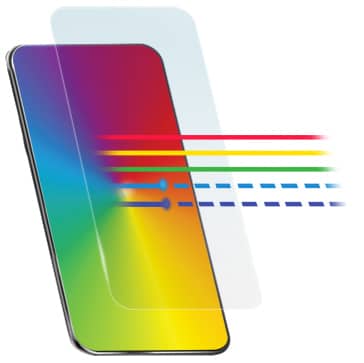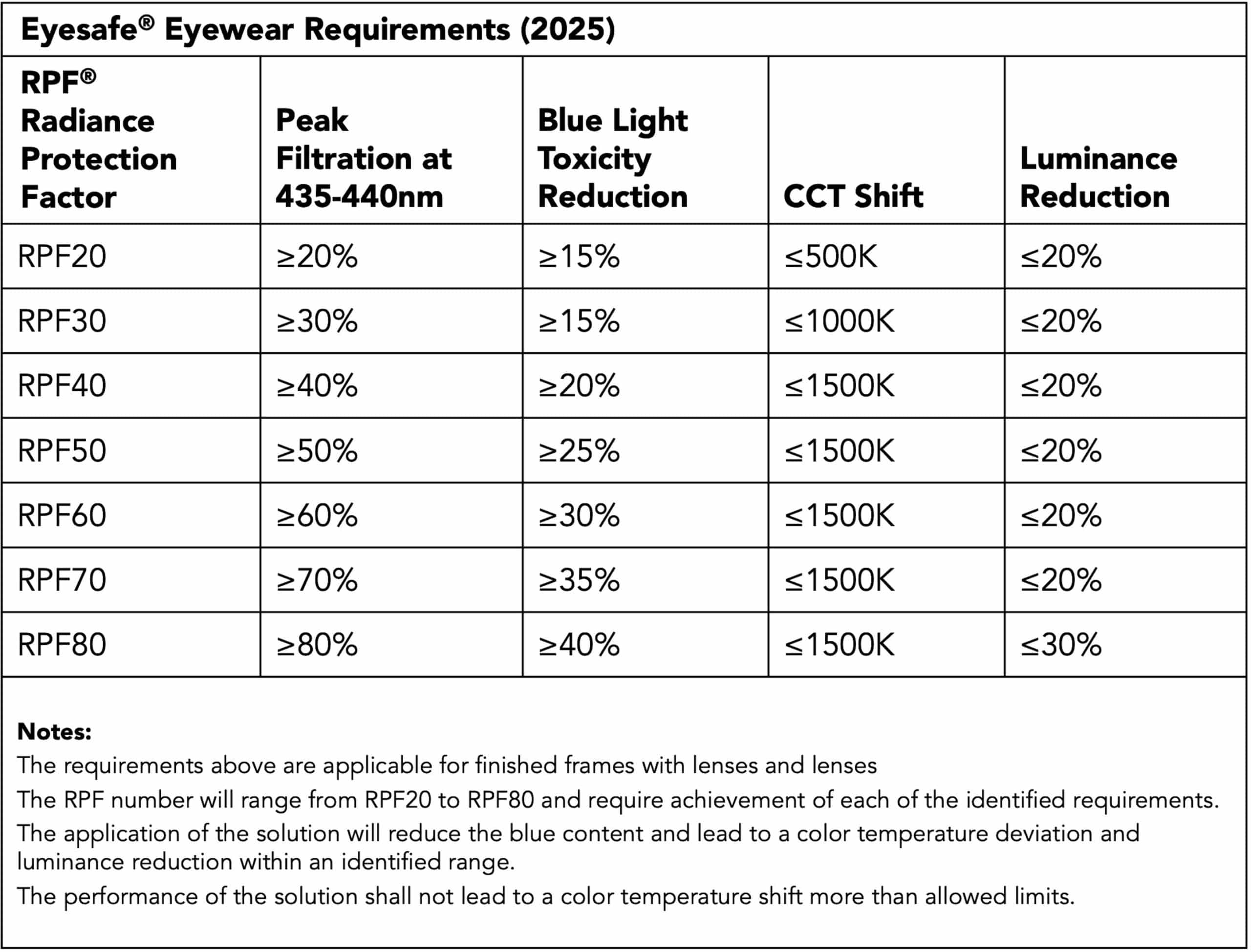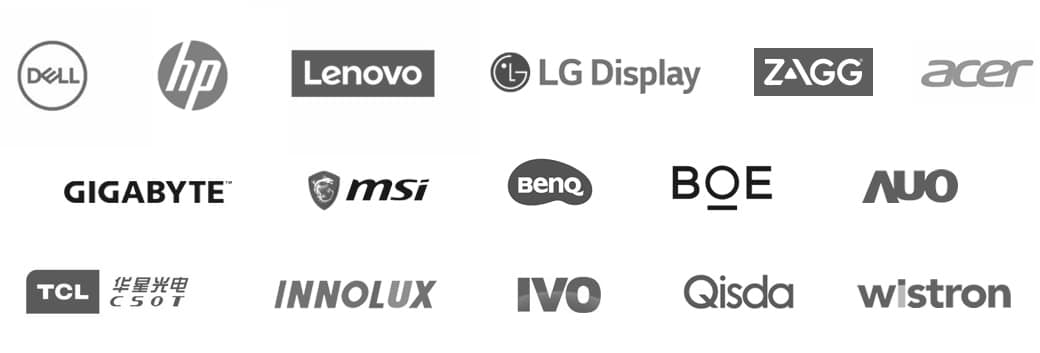Eyesafe® Requirements for Blue Light Management and Color Performance for Display, Screen Protection and Eyewear Products
Blue Light & Color Requirements
Visible light spans the electromagnetic spectrum between 380 and 780 nanometers (nm). Within the light spectrum, blue light, which is also referred to as high-energy visible (HEV) light, corresponds to wavelengths between 380 and 500nm. Eyesafe has developed industry-leading requirements for displays, screen accessories and eyewear to address the growing need for effective consumer protection.
Research indicates that blue light exposure at specific wavelengths may impact eye health and circadian rhythms. The 435-440 nanometer (nm) range is associated with the greatest risk to retinal health, as identified by the Spectral Weighting Factors for Blue-Light Hazard published by the International Commission on Non-Ionizing Radiation Protection (ICNIRP) in 2013 and the American National Standards Institute (ANSI) in 2015. The 480-500 nm range is associated with melatonin suppression and disruption to circadian rhythms, based on the International Commission on Illumination’s (CIE) published and universally recognized standard CIE S 026/E:2018.
Eyesafe® Display Requirements
Eyesafe® Display Requirements 3.0 focus on high energy visible (HEV) blue light that is emitted by digital devices and relies on photobiological safety standards from the American National Standards Institute to guide its development: Z80.3-2018 and Z87.1- 2015, and the IEC/EN 62471 from the International Electrotechnical Commission, in addition to guiding industry research. Additionally, the International Commission on Illumination (CIE) published the universally recognized standard action spectra for melanopic impact that is used by all industries that work with artificial light. The peak sleep-wake impact is at 490 nm, which is between traditional blue and green on RGB displays.
In the wake of increasing research indicating potential negative effects of blue light on the eyes and circadian rhythms, Eyesafe Display Requirements 3.0 measure both Radiance Protection Factor (RPF®) and a new optional metric, Circadian Protection Factor (CPF). This approach provides a more comprehensive measure of blue light on health, evaluating blue light emissions in the wavelengths affecting both eye health (peak 435-440 nm) and melatonin/sleep-wake cycles (peak 480-500 nm).
Download the Eyesafe® Display Requirements
Learn about UL Solutions Verification of Eyesafe® Display Requirements
Color management and user experience
At Eyesafe, we are very cognizant of the impact that blue light filtering has on color transmission. In fact, it is a primary goal of all Eyesafe® technologies to selectively filter blue light while maintaining crisp and vivid color transmission in digital displays.
The CIE (International Commission on Illumination) 1931 color spaces were the first to define quantitative links between physical pure colors (i.e. wavelengths) in the electromagnetic visible spectrum, and the physiological perceived colors in human color vision. The mathematical relationships that define these color spaces are essential tools for color management when dealing with color inks, illuminated displays, and recording devices such as digital cameras. Many digital devices, whether they are phones, tablets or monitors, strive to create an illumination rating known as D65. The CIE positions D65 as the standard daylight illuminant, as it is intended to represent average daylight. As we filter blue light from display emissions, we also strive to minimally impact D65 illumination ratings.
Eyesafe® Accessory Requirements
Amidst growing scientific and medical research on blue light exposure, Eyesafe is introducing Eyesafe Accessory Requirements 3.0, a set of updated criteria tailored to different display types—LCD/LED and OLED—to assess blue light filtration and color performance. These guidelines are designed to support manufacturers of blue light screen protectors and blue light privacy screens in product development.
Key Assessment Criteria
Screen Protection Designed for LCD/LED Displays (Laptops, Monitors, TVs)
Given the blue light peak of LCD/LED screens, Eyesafe Accessory Requirements 3.0 utilize Radiance Protection Factor (RPF®) to measure blue light filtration at the 435-440 nm peak—the range of greatest concern for eye health. Higher RPF scores (0-100) indicate greater blue light filtration. Products must also meet criteria for blue light toxicity reduction, as well as correlated color temperature and luminance to maintain vibrant display colors (with accommodations for privacy screen protectors).
Screen Protection Designed for OLED Displays (Smartphones)
OLED screens emit peak blue light at a higher wavelength, which research associates with circadian disruption and melatonin suppression. Therefore, Eyesafe Accessory Requirements 3.0 use Circadian Protection Factor (CPF) to evaluate blue light filtration at the 480-500 nm peak. Higher CPF scores indicate less circadian disruption. Products must also meet criteria for change in circadian impact across the full visible spectrum (380-780 nm), as well as correlated color temperature and luminance to maintain vibrant display colors (with accommodations for privacy screen protectors).
Download the Eyesafe® Accessory Requirements
Learn about UL Solutions Verification of Eyesafe® Accessory Requirements
Eyesafe® Eyewear Requirements
With increasing scientific and medical research on blue light exposure, Eyesafe is introducing Eyesafe Eyewear Requirements 1.0, a comprehensive set of criteria for evaluating blue light filtering glasses. These guidelines are designed to help eyewear manufacturers deliver effective blue light filtration while preserving color accuracy and clarity for the user.
These industry requirements establish blue light filtration and color requirements for the eyewear category. The criteria are based on the Spectral Weighting Factors for Blue-Light Hazard as published by the International Commission on Non-Ionizing Radiation Protection (ICNIRP) in 2013 and the American National Standard Institute (ANSI) in 2015, which indicate the wavelength between 435-440 nanometers pose the greatest risk to retinal health.
Key Assessment Criteria
- RPF® (Radiance Protection Factor) Scale – A new standardized measure of blue light filtration effectiveness, modeled after SPF for sunscreen. The RPF level identifies how much blue light is filtered at peak 435-440 nanometers, providing transparency for consumers. An RPF of 20 or higher is needed to meet the Eyesafe Requirements.
- Color Impact– maximum color shift and luminance reduction allowed by RPF level to ensure visual clarity and accuracy, so users can enjoy their devices while wearing blue light eyewear without significant color distortion.
REQUEST MORE INFORMATION ABOUT EYESAFE® REQUIREMENTS AND VERIFICATION
You will be contacted by Eyesafe or one of our partners with more information.

